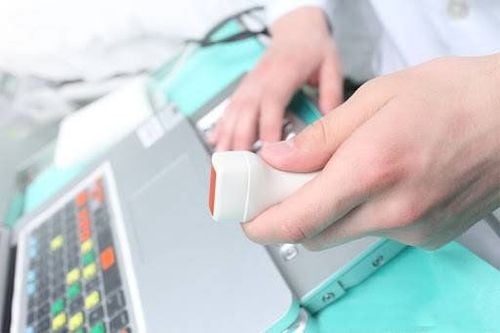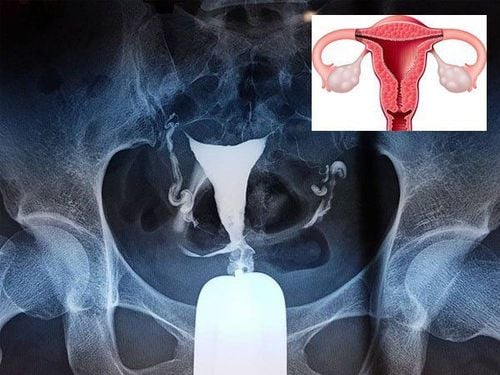This is an automatically translated article.
Posted by Master, Doctor Lam Thi Kim Chi - Doctor of Radiology - Department of Diagnostic Imaging - Vinmec Danang International General Hospital
Congenital hip dislocation is a rare disease, but if it is not detected early, it will lead to gait abnormalities, scoliosis, pelvic deformity affecting later reproduction. Girls. In some cases, the doctor will order an ultrasound to diagnose a child with a congenital hip dislocation.
1. Congenital hip dislocation is a rare disease
Congenital hip dislocation is a condition in which the femoral head and acetabulum on one or both sides are not in the correct position at birth.
If the child is diagnosed and treated in the first month of life, congenital hip dislocation can be completely cured without leaving complications. However, if treatment is initiated after 2 years of age, the primary goal is to slow the progression of hip osteoarthritis.
Common complications of congenital hip dislocation such as: kyphosis, scoliosis, pelvic dislocation, limping, hip degeneration causing pain, affecting childbirth in girls...
Billionaire The incidence of this malformation is about 1/800-1000 births, occurs more often in women than in men, more often in the left hip than in the right hip. It is found that 60-70% of cases diagnosed with congenital hip dislocation heal on their own within 2-4 weeks (Immature hip).
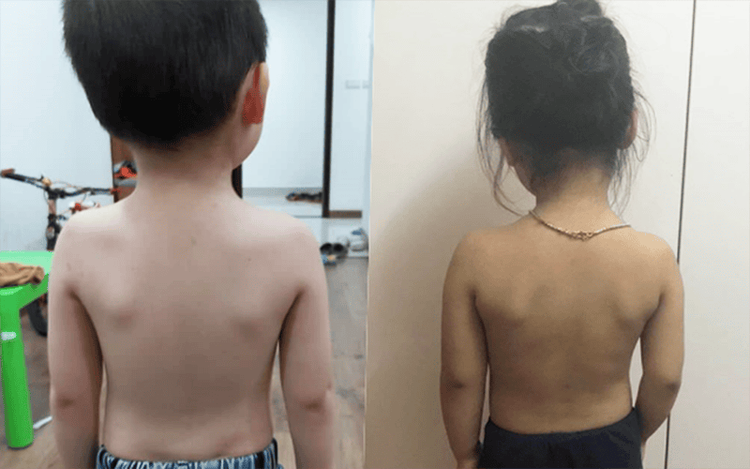
2. Risk factors for congenital hip dislocation
Factors that increase the risk of congenital hip dislocation can be mentioned as follows:
Female gender (female: male = 8:1) Family history of hip dislocation The fetus has a breech position. Forefoot deformity MORE: Rehabilitation of congenital hip dislocation
3. In what cases is ultrasound indicated for congenital hip dislocation?
Children will be assigned an ultrasound to diagnose congenital hip dislocation in the following cases:
There is a "clunk" sound when moving the hip Asymmetrical two hip joints Family history of siblings with hip dislocation Congenital dislocation of the hip Buttock position Poor foot form There is a deformity of the foot
4. Conduct ultrasound and X-ray of congenital hip dislocation
Ultrasound is a technique that allows the diagnosis of congenital hip dislocation, this method is used in children under 4 -5 months old. When the child is over 6 months, the ossification of the femur blurs the landmarks on ultrasound, at this time, ultrasound should be replaced by radiography.
The child is placed in supine position, the leg on the examined side is closed and flexed, the doctor conducts ultrasound and measures the necessary parameters. Then, the doctor takes measurements on the X-ray images and combines them to make a diagnosis.
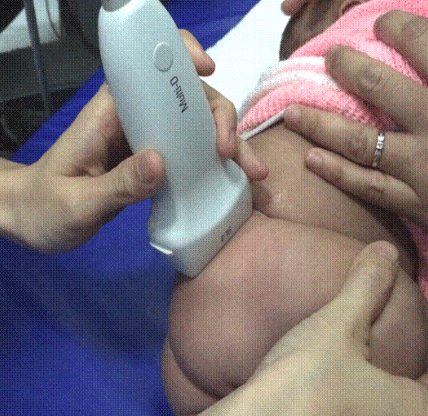
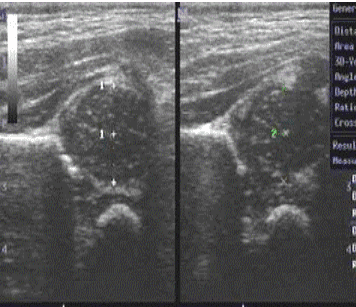
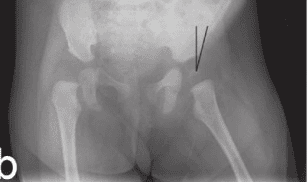
5. Ultrasound diagnosis of congenital hip dislocation
Ultrasound can calculate the femoral head coverage, the acetabulum ceiling distance and the Alpha, Beta angles according to the GRAF method. X-ray assessment of femoral head ossification (symmetrical, age-related?), alveolar morphology, measurement of Hilgenreiner, Perkin, Shenton lines.
Combined X-ray and ultrasound classify the hip into 4 types:
Type 1: Normal Type 2: Mild dysplasia Type 3: Dysplasia, subluxation Type 4: Severe dislocation. Early diagnosis and treatment of congenital hip dislocation in children is very important. Diagnostic methods should be used even if there are only risk factors and no clinical symptoms. To diagnose congenital hip dislocation, it is necessary to combine many measurement methods on ultrasound and X-ray.
With many years of experience in examining and treating diseases in children, now the Pediatrics Department at Vinmec International General Hospital has become one of the major health care centers, fully equipped with medical equipment. The most modern medical equipment, ultrasound system, X-ray machine, along with a team of skilled doctors, help improve the ability to diagnose and treat congenital hip dislocation early.
Therefore, if the child has signs of congenital hip dislocation, parents need to take the child to Vinmec International General Hospital as soon as possible to examine and receive support and advice from doctors.
Please dial HOTLINE for more information or register for an appointment HERE. Download MyVinmec app to make appointments faster and to manage your bookings easily.





